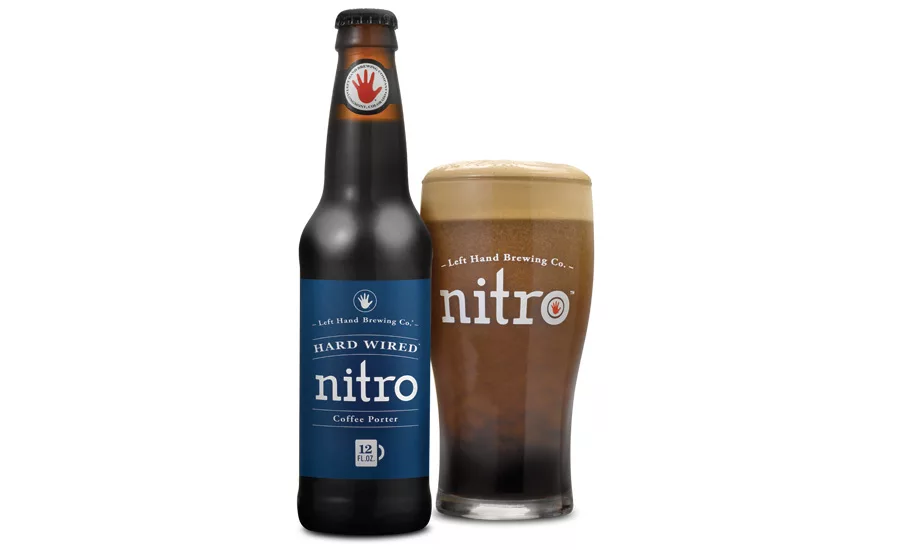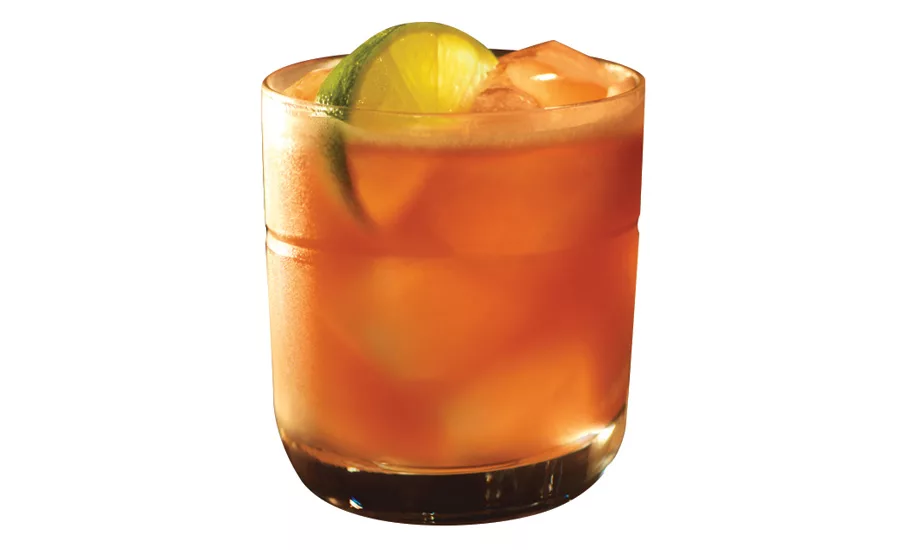Premium, high quality beer, wine and spirits fueling on-premise channel
Millennials more likely to trade up upon server suggestion

Craft beer sales now account for 36 percent of total beer orders in on-premise, Next Level Marketing’s Mike Ginley says. (Image courtesy of Left Hand Brewing Co.)

Fresh cocktails are the top trend impacting spirits in the on-premise channel, Next Level Marketing’s Mike Ginley says. (Image courtesy of Bacardi Rum)
Novelist and playwright Oscar Wilde once said, “Everything in moderation, including moderation.” After challenging times as a result of the economic downturn, the on-premise channel has made gains through moderate year-by-year growth. Chicago-based Mintel reported in its May 2015 report titled “On-Premise Alcohol Trends – US” that alcohol beverage sales were up 2.6 percent totaling $93.7 billion in 2014. This was a deceleration from its annual growth between 2009 and 2013; however, the market research firm expects that sales will return to those growth levels.
“Sales are forecast to resume increasing moderately each year between 2014 and 2019, when sales are projected to reach $110.2 billion,” the report states. “The slowly improving economy is driving sales, as consumer disposable personal income (DPI) and confidence rises, buoyed by declining unemployment, and enables them to spend on dining out more frequently than in recent years.”
Within the three beverage alcohol categories — beer, wine and spirits — gravitation toward quality, premium products is leaving its mark on the channel. “Premiumization across categories, such as craft beer, artisanal/small batch spirits, or unique/limited-edition wines is driving sales at restaurants,” Mintel’s report states.
For beer, the main trend driver has been the craft beer segment, according to Mike Ginley, partner with Next Level Marketing, Westport, Conn.
“The trend story for the beer category is craft, craft, craft,” he says. “On-premise has experienced a dramatic shift from mass domestics to crafts.”
Across the share of total beer orders, craft now accounts for 36 percent compared with 16 percent five years ago, Ginley notes. This macro trend also is giving credence to numerous sub-trends within the on-premise beer market.
“The shift in crafts has resulted in several other changes in the on-premise beer consumption,” Ginley explains. “Beer consumers are ordering way more beer styles than they ever have, so it’s not just American lagers and pilsners, people are drinking more stouts than ever and IPAs are really hot. You’re seeing people are trying a lot more styles that they’ve never had before and it’s also more premium.”
According to Next Level’s “Annual VIBE Beverage Consumer Trend Study,” the Top 3 styles ordered by on-premise consumers are lagers (37 percent), ales
(35 percent) and seasonals (34 percent).
Another element impacting beer consumption within the on-premise channel is where consumers are frequenting.
“Possibly the biggest challenge for beer in on-premise is the changing nature of that market which, for over a decade now, has seen beer’s longtime heartland, the neighborhood bar, decline significantly — [a] 16 percent reduction in the number of such bars 2004-14,” says Jon Collins, president of Nielsen CGA, Chicago. “While, over the same period, we have seen a 40 percent increase in the number of restaurants — the sort of outlets where beer faces more significant competition from wine, spirts and non-alcoholic beverages.”
Beer isn’t the only market that is putting a premium stamp on the on-premise channel. “The shift from habit to treat and further growth in food-led outlets opens up fresh opportunities for spirits — the more premium variants meeting that ‘treat’ occasion while aperitifs and digestifs will compliment a meal,” Collins says. “As a result, spirts is outperforming beer.”
Driven by cocktail creations, the spirits category is appealing to consumers’ desire for fresh, handcrafted creations.
“Fresh is the No. 1 type of cocktail that consumers are interested in ordering,” Ginley says. “Fresh trumps all other cocktail trends such as skinny, organic and bourbon drinks. Fresh can be combined across all types of cocktails to communicate the key cocktail attributes that are most important to consumers — taste, premium, natural and high quality.”
According to Next Level’s research, 74 percent of respondents noted they were somewhat to very interested in fresh, handcrafted cocktails. Additionally, 68 percent are somewhat to very interested in ordering handcrafted spirit brands with 40 percent of respondents defining handcrafted as being produced with great care and attention to detail.
Although wine is benefiting from premium portfolios, it has not seen those trends proliferate to the same degree as its beverage alcohol counterparts.
“Our research suggests that on-premise consumers are somewhat intimidated by wine and more education is needed to lower the fear factor,” Next Level’s Ginley says.
When it comes to wine, on-premise consumers are looking for smaller wine lists (around nine to 10 on a list), suggestive selling, samples to taste prior to purchase, tasting flights and tasting descriptions, he adds.
“They really need some suggestive selling,” Ginley says. “They’re afraid to make a mistake so they would love to have the bartenders and servers guide them through it and make some suggestions for them. Unlike beer and unlike cocktails, wine consumers don’t want to make a mistake. They love to have a sample [that] they can try before they buy.”
Education and suggestive help could tap into country-of-origin selling points. According to Next Level’s research, when asked which country of origin they ordered most often, 37 percent of respondents said the United States and 15 percent said Italy. However, the No. 3 response was “I don’t know.”
Knowing your audience
Although the economy has improved from when the recession began in 2007, consumers still remain cautious about spending when it comes to on-premise.
“Our research shows that consumers are uncertain about the current economy and a majority of them are watching their bar and restaurant spending,” Ginley says. “Females and older consumers are especially cautious, while males and millennials are the ones going out more often and spending more money.”
Because of this disparity among consumers, understanding the demographics and their on-premise preferences can be vital to operators.
“Demographics come heavily into play for on-premise beverage programs,” Ginley explains. “There are significant gender and generational differences that must be taken into consideration when developing beverage offerings across beer, wine and spirits.”
For example, within the beer category, males skew toward regular beer while females are more likely to opt for light beer, Ginley says. When it comes to beer segments, males and millennials have a higher incidence of selecting craft while women skew toward imported beer. Baby boomers are more likely to opt for domestic beer, according to Next Level’s research.
Chicago-based Technomic Inc. also notes the impact that millennials are having on on-premise. As part of the market research firm’s Trends in Adult Beverage (TAB) series, the MillennialTAB report highlights insights and implications around millennials’ alcohol purchases on-premise and at retail.
“In many ways, millennials are ideal adult beverage consumers,” said Donna Hood Crecca, senior director at Technomic, in a statement. “They are open and willing to learn about new styles and flavors of beer, wine and spirits. They are frequent consumers in many retail and restaurant settings, where they balance exploration and trial with loyalty to a few favorite brands.”
As on-premise operators hope to appeal to consumers, Next Level’s Ginley says it will boil down to three things: innovation, discovery and trade up.
“People are looking to drink better; they’re looking for quality,” he says. “Fifty percent of consumers across wine, beer and spirits are trying a new brand every 30 days, so it’s about discovery, it’s about trade up and trying new things.”
Looking for a reprint of this article?
From high-res PDFs to custom plaques, order your copy today!



